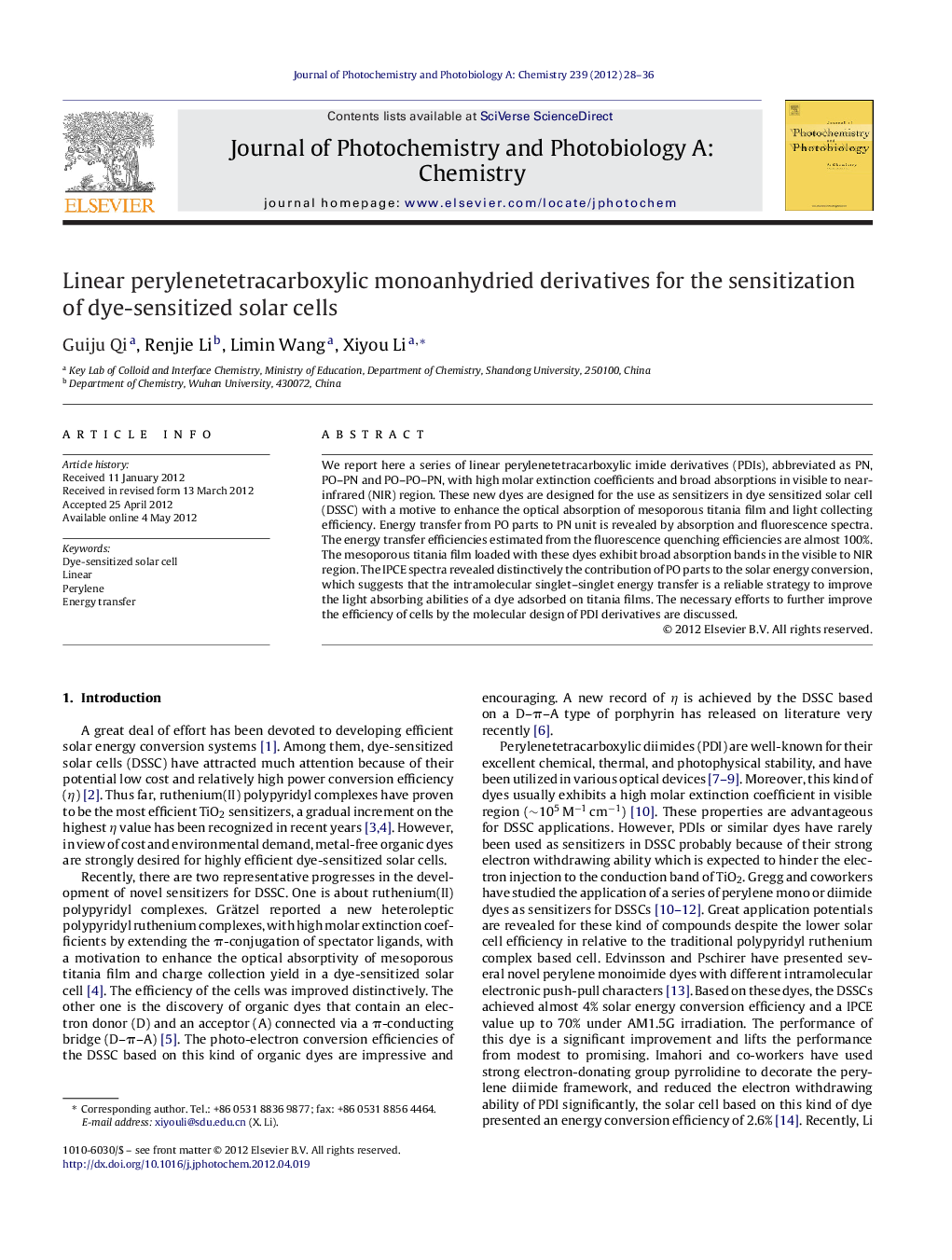| Article ID | Journal | Published Year | Pages | File Type |
|---|---|---|---|---|
| 27127 | Journal of Photochemistry and Photobiology A: Chemistry | 2012 | 9 Pages |
We report here a series of linear perylenetetracarboxylic imide derivatives (PDIs), abbreviated as PN, PO–PN and PO–PO–PN, with high molar extinction coefficients and broad absorptions in visible to near-infrared (NIR) region. These new dyes are designed for the use as sensitizers in dye sensitized solar cell (DSSC) with a motive to enhance the optical absorption of mesoporous titania film and light collecting efficiency. Energy transfer from PO parts to PN unit is revealed by absorption and fluorescence spectra. The energy transfer efficiencies estimated from the fluorescence quenching efficiencies are almost 100%. The mesoporous titania film loaded with these dyes exhibit broad absorption bands in the visible to NIR region. The IPCE spectra revealed distinctively the contribution of PO parts to the solar energy conversion, which suggests that the intramolecular singlet–singlet energy transfer is a reliable strategy to improve the light absorbing abilities of a dye adsorbed on titania films. The necessary efforts to further improve the efficiency of cells by the molecular design of PDI derivatives are discussed.
Graphical abstractFigure optionsDownload full-size imageDownload as PowerPoint slideHighlights► A series of linear D–A perylene dyes were developed for dye-sensitized solar cells. ► The extended π-conjugation improves the light-harvesting capability of perylene dyes. ► The energy transfer efficiencies from the donor parts to acceptor unit are almost 100%. ► The energy transfer contributes to the solar energy conversion process.
